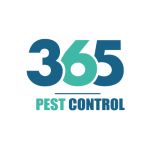Pests like termites, rodents, and spiders can be a nuisance and potentially threaten your home. A comprehensive pest control in Melbourne plan is crucial for maintaining a healthy living environment. Here's a detailed guide on how to tackle each pest effectively.
Controlling termites, rodents, and spiders requires a multi-faceted approach that combines preventive measures, non-chemical interventions, and, in some cases, pesticides. Here's a comprehensive pest control plan for each pest:
Termite Control:
- Prevention:
- Maintain proper ventilation in your home.
- Repair any leaks promptly to eliminate moisture sources.
- Remove wood-to-soil contact around your home.
- Use termite-resistant materials during construction.
- Install a termite barrier or use treated wood.
- Regular inspections:
- Schedule annual termite inspections with professionals.
- Regularly inspect wooden structures for signs of termite activity.
- Non-chemical treatments:
- Use physical barriers like steel mesh or sand during construction.
- Set up bait stations to monitor termite activity.
- Chemical Treatments:
- If the infestation is severe, consult a pest control professional for chemical treatments.
- Liquid termiticides may be applied to the soil around the foundation.
Rodent Control:
- Seal Entry Points:
- Identify and seal all potential entry points for rodents.
- Ensure doors and windows are closed tightly.
- Good sanitation:
- Keep food stored in airtight containers.
- Regularly clean areas where food is prepared or eaten.
- Traps:
- Use snap traps or live traps to catch rodents.
- Place traps along walls and in areas where rodent activity is observed.
- Rodenticides:
- Consider rodenticides for severe infestations, but use them cautiously.
- Follow product instructions and keep them out of reach of pets and children.
Spider Control:
- Regular cleaning:
- Clean and dust regularly to eliminate spider webs and egg sacs.
- Vacuum areas where spiders are often found.
- Sealing Entry Points:
- Seal cracks and crevices in walls, doors, and windows.
- Ensure screens are intact and fit tightly.
- Natural repellents:
- Use natural repellents like citrus peels, vinegar, or essential oils (e.g., peppermint, citronella) in areas where spiders are present.
- Insecticides:
- Apply spider control insecticides in targeted areas.
- Use caution to avoid harm to beneficial insects and pets.
General tips:
- Professional help:
- Consult pest control professionals for a thorough inspection and treatment plan.
- Integrated Pest Management (IPM):
- Adopt an IPM approach, combining various effective and sustainable pest control strategies.
- Regular maintenance:
- Keep up with regular maintenance to prevent re-infestations.
- Follow the Safety Guidelines:
- Always follow safety guidelines and use appropriate protective gear when applying pesticides.
- Remember, the severity of infestations and the specific environment may require adjustments to these recommendations. If in doubt, seek professional pest control services for a tailored solution.
Certainly! Here are some specific pest control methods for termites, rodents, and spiders:
Termite Control Methods:
- Soil Treatment:
- Apply liquid termiticides to the soil around your home's foundation.
- It creates a protective barrier that prevents termites from entering.
- Wood treatment:
- Treat wooden structures with borate-based products to resist termites.
- Professional assistance:
- Consult a licensed pest control professional for a thorough inspection and targeted treatment.
Rodent Control Methods:
- Sealing Entry Points:
- Identify and seal any cracks, gaps, or openings where rodents may enter.
- Use steel wool or caulk for effective sealing.
- Traps:
- Set up snap traps or live traps in rodent activity areas.
- Place traps along walls, near entry points, and where droppings are present.
- Rodenticides:
- Use rodenticides cautiously and follow the product instructions.
- Place bait stations in areas inaccessible to pets and children.
Spider Control Methods:
- Regular cleaning:
- Clean and dust regularly to remove spider webs and egg sacs.
- Pay attention to corners, ceilings, and other hidden areas.
- Seal Entry Points:
- Seal cracks, gaps, and openings in doors, windows, and walls to prevent spider entry.
- Insecticides:
- Apply spider-specific insecticides in targeted areas.
- Use caution to avoid harming beneficial insects and pets.
Integrated Pest Management (IPM) Tips:
- Inspection and monitoring:
- Regularly inspect your property for pest signs.
- Use monitoring devices like sticky traps to detect pest activity.
- Sanitation:
- Keep your living spaces clean and free of food debris.
- Properly dispose of garbage and maintain proper hygiene practices.
- Biological Control:
- Introduce natural pest predators, such as predatory insects or animals.
- Cultural controls:
- Modify your environment to reduce pest infestation.
- Remove clutter, excess moisture, and food sources.
Remember, combining these methods tailored to your situation is often the most effective approach. If you encounter severe infestations, seeking professional assistance is recommended for a targeted and efficient solution.
In conclusion, a holistic approach to pest control involves a combination of preventative measures, regular inspections, and, when necessary, targeted chemical interventions. Tailor these strategies to your specific situation, and consider seeking professional assistance for severe infestations. With diligence and a proactive mindset, you can create a pest-free environment in and around your home.






Comments